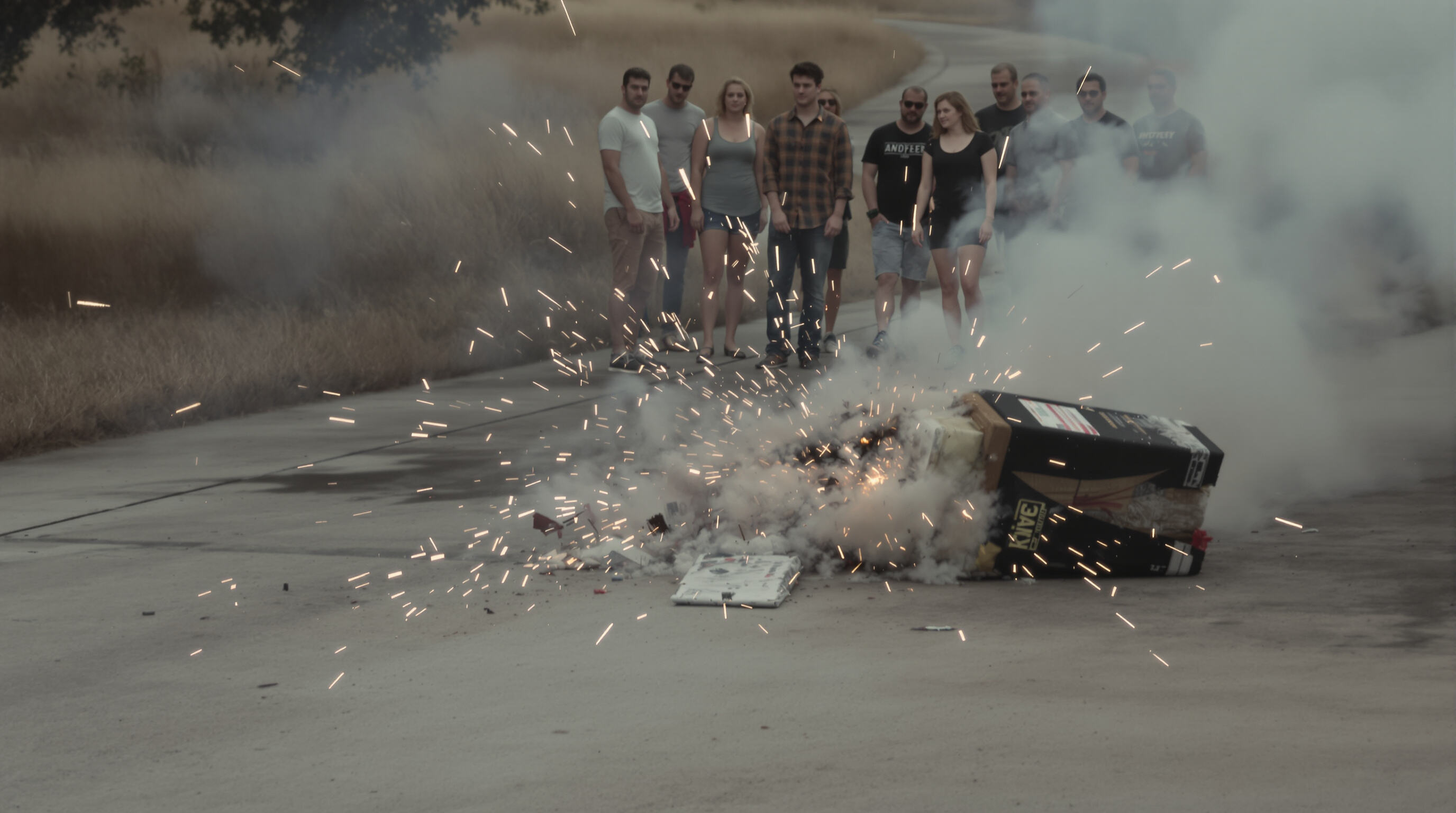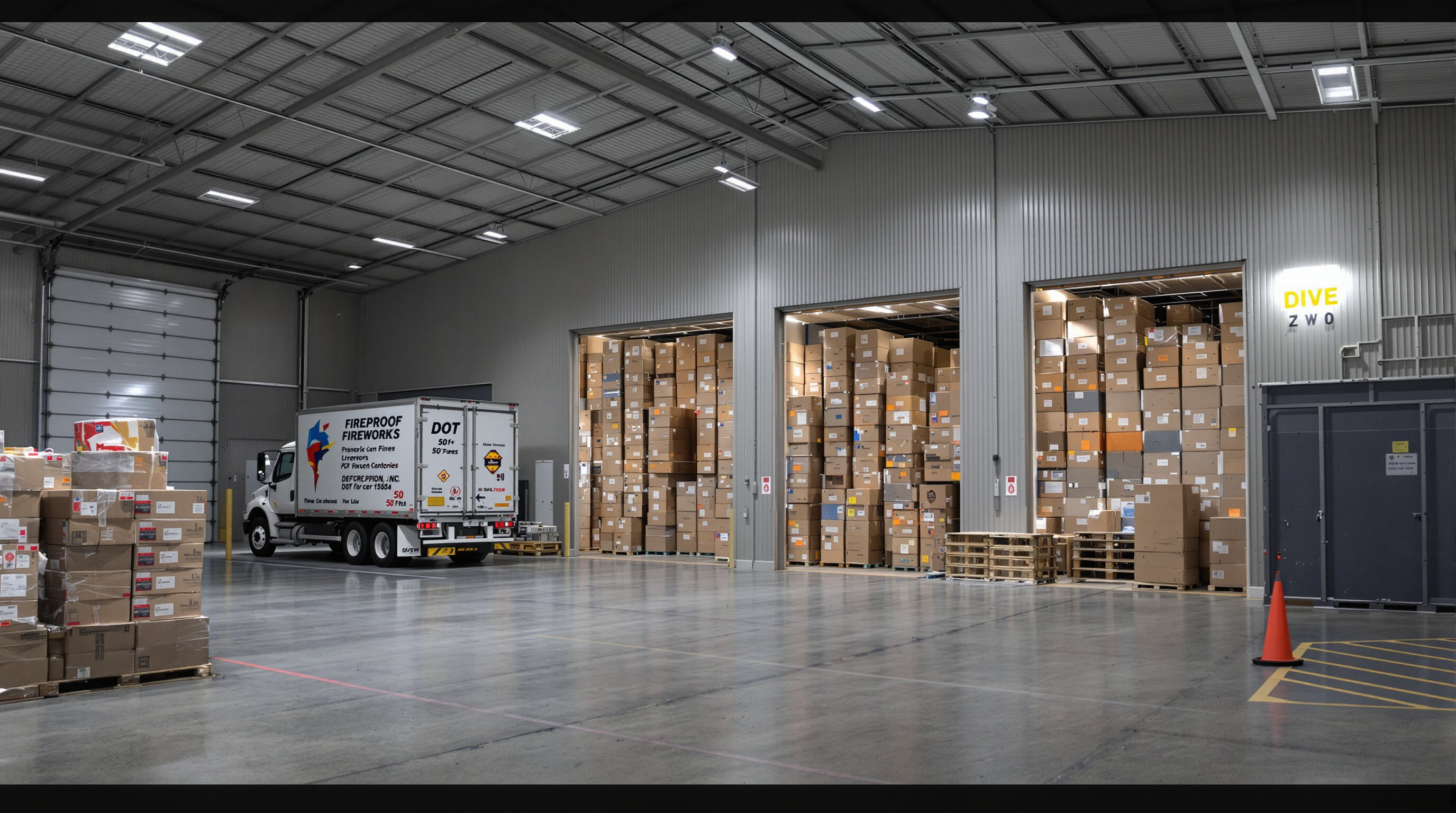Safety Risks and Unique Hazards of Cake Fireworks

Why Cake Fireworks Pose Higher Safety Risks
Cake fireworks come with serious risks because they fire multiple shots in quick succession. When placed improperly, these whole racks can actually tip over during the display, shooting sparks sideways right into people watching nearby. What makes them so dangerous is that if one part fails to ignite properly, it often leads to all sorts of problems down the line. The way these fireworks are packed together creates a lot of heat too, which means event organizers need to set up bigger exclusion zones compared to regular fireworks displays at local festivals.
Common Injuries and Fire Hazards from Consumer Fireworks
Every year in America, consumer fireworks send around 9,700 people to emergency rooms, and kids under 15 account for nearly half those cases based on CPSC records. What kind of injuries? Think third-degree burns from stuff that gets as hot as 1,200 degrees Fahrenheit, eyes damaged by misfiring rockets, and whole neighborhoods going up in flames when sparks hit dry grass. Last year was particularly bad too – testing showed almost one out of five fireworks had faulty parts built right into them, making accidents even more likely at backyard parties and family gatherings. The risk goes way up when folks ignore basic safety rules like standing back far enough or failing to keep buckets of water nearby just in case something goes wrong.
Public Safety Concerns vs. Regulatory Compliance
The mismatch between different levels of regulation causes real problems when it comes to balancing holiday celebrations with public safety. Many sellers simply ignore required safety tests because they know enforcement varies so much from place to place. At the federal level there are rules about how stable fireworks need to be and whether their fuses work properly, but local authorities don't always follow through on these requirements. As a result, unsafe products still find their way into stores across the country. Wildfire management data shows these regulatory shortcomings contribute to roughly one third of all firework-related blazes each year, particularly in rural areas where communities face both economic pressures and environmental risks from improperly manufactured explosives.
Safe Handling and Regulatory Compliance for Buyers
Best Practices for Lighting and Managing Cake Fireworks
When lighting those cake fireworks, it's best to stick with long lighters or fuses so folks can stay back safely. Set up the display somewhere level where nothing will catch fire easily, maybe concrete ground or just plain dirt works fine. Sandbags or heavy rocks make good anchors to stop things from falling over during the show. Someone needs to watch the breeze throughout everything happens, preferably someone who knows what they're doing. Wind speeds under 10 miles per hour are ideal conditions for firing off these displays. Also check that everyone watching is well clear, around 100 feet minimum. And don't forget about having something ready to put out any flames if needed. A garden hose or proper fire extinguisher should be within reach at all times. About one quarter of all firework accidents involve smoldering bits left behind after the show, according to National Fire Protection Association data from last year.
Required Protective Measures and Safe Distances
- Eye protection: ANSI-approved goggles for all participants
- Minimum distances: 150 feet for cakes under 3", 300 feet for larger displays
- Fallout zones: Clear 50-foot radius of dry vegetation or flammable materials
Never relight malfunctioning units—wait 20 minutes before soaking in water.
How to Source Cake Fireworks from Licensed and Legal Vendors
Reputable distributors should provide:
- ATF/FEL licenses (U.S. sellers) or CE certification (EU suppliers)
- Product liability insurance covering at least $2 million
- Safety data sheets with composition and storage guidelines
Verify vendor compliance through state regulatory databases and prioritize suppliers participating in voluntary safety programs like APA's PyroGuard.
Checking Local Laws and Avoiding Illegal Fireworks Suppliers
56% of confiscated fireworks in 2023 violated fuse timing or chemical limits (CPSC report). Cross-reference seller permits with local fire marshal records, and reject "gray market" sellers offering:
- Prices 30% below market average
- No verifiable testing documentation
- Bulk sales without storage guidance
Cost-Effective Procurement Without Compromising Safety
Bulk Pricing Trends and Seasonal Discounts in 2024
Bulk purchasing is where wholesale cake fireworks buyers really start saving money. Industry stats point to volume discounts ranging from about 15% all the way up to 30% when someone orders over 50 units at once. The best times to shop tend to be after New Year's around January and February, plus those few weeks before summer holidays hit in April and May. Suppliers often slash prices by roughly 20% during these periods just to get rid of old stock. But don't ever cut corners on safety certifications just because something looks cheaper. Good vendors stick to their quality control no matter what time of year it is, even while running special deals now and then.
Evaluating Supplier Reliability and Product Consistency
Prioritize suppliers with documented safety records and batch testing protocols when sourcing cake fireworks. Key reliability indicators include:
- ISO 9001 certification for quality management systems
- Minimum 3-year track record of incident-free shipments
- Consistent product performance across multiple batches Conduct sample testing of effects timing and fuse reliability before large orders, as inconsistent ignition sequences pose serious safety hazards during displays.
Shipping, Storage, and Inventory Management for Wholesalers

Proper logistics planning prevents degradation of pyrotechnic materials during transit and warehousing. Implement these protocols:
| Requirement | Safety Specification | Cost Impact |
|---|---|---|
| Transportation | DOT Class 1.4G compliant vehicles | +12–18% vs standard |
| Storage Conditions | Climate-controlled (<25°C/40% RH) | +8–10% operational costs |
| Inventory Rotation | FIFO system with expiration tracking | 5–7% reduced waste |
Maintain fireproof containment units and minimum 50-foot clearance from other combustibles in storage facilities.
Balancing Low Cost with High Safety Standards
Achieving true cost-effectiveness requires aligning procurement strategies with safety benchmarks. Negotiate contracts that include:
- Third-party safety audits funded jointly by buyer and supplier
- Bulk pricing tiers contingent on passing ISO 13764 stability tests
- Warranty coverage for defect-related incidents Leading wholesalers report 23% lower incident rates when prioritizing suppliers with embedded safety R&D budgets, proving that responsible sourcing reduces long-term liability costs.
FAQ
What are the main risks associated with cake fireworks?
Cake fireworks pose risks such as tipping over and shooting sparks sideways if improperly placed, potentially causing injuries or fires.
How can consumers ensure they are buying safe fireworks?
Consumers should source fireworks from reputable vendors with proper licenses, safety certifications, and product liability insurance. Checking local laws and seller permits is also crucial.
What precautions should be taken when handling cake fireworks?
Ensure proper setup on a stable surface, use long lighters, maintain safe distances, and have fire extinguishing tools nearby.


